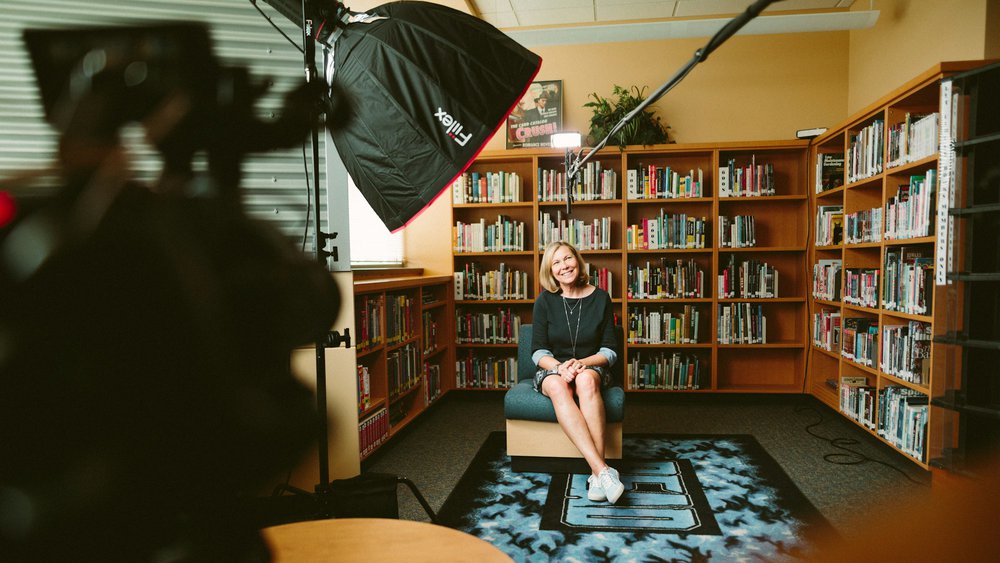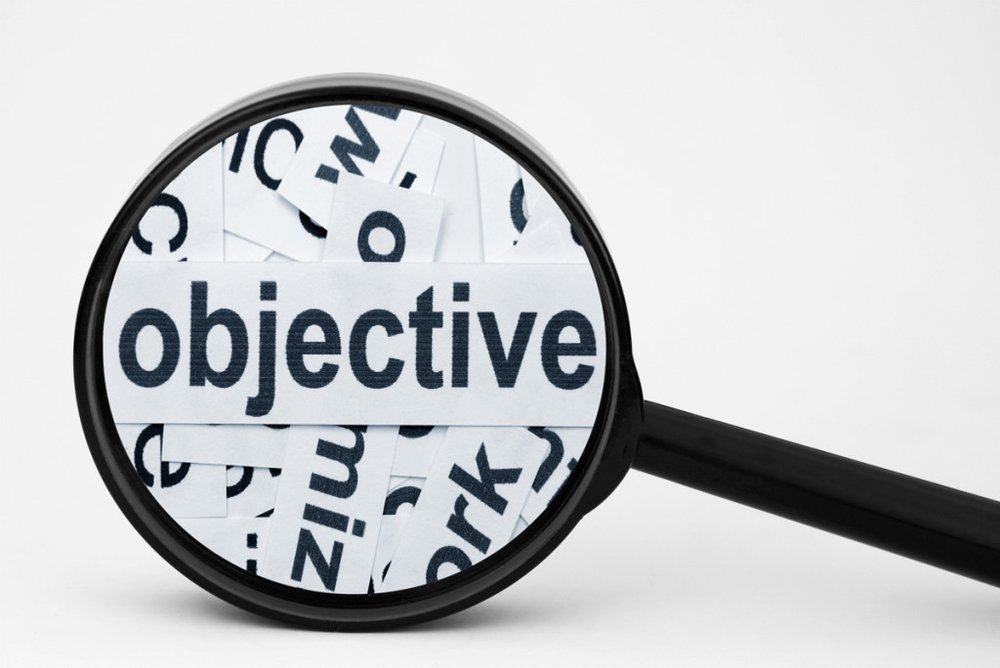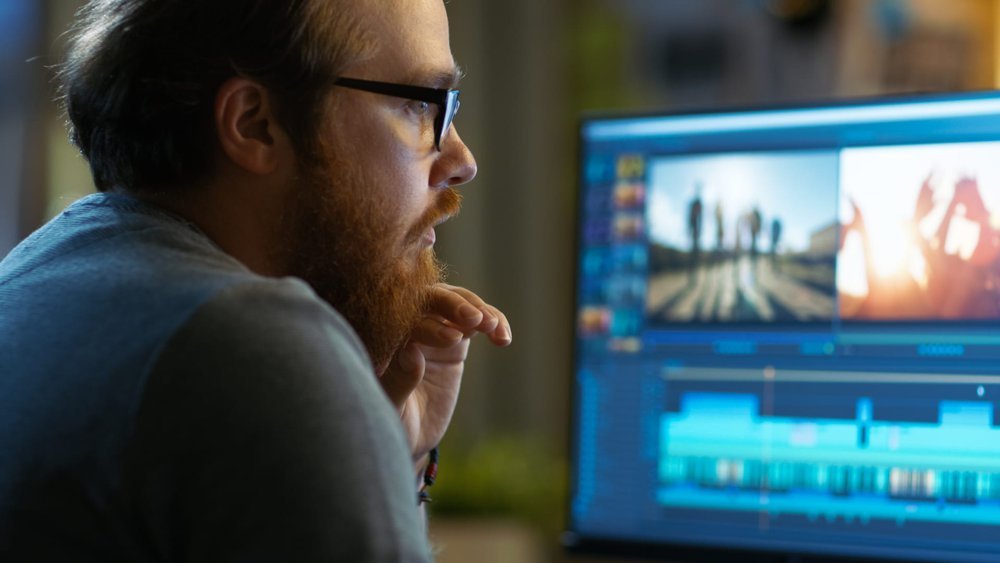Corporate video production is more than creating a good-looking video. It is about using visual storytelling to grow your business and connect with your audience on a deeper level.
A well-produced corporate video can strengthen your brand identity, engage your target audience, and make complex ideas easier to understand. From marketing and training videos to internal communications and recruiting, corporate videos are one of the most effective ways to build relationships with both internal and external audiences.
When done right, video production for corporate teams does more than inform. It inspires action. It helps businesses communicate vision, culture, and credibility in a way that words alone cannot.
The key is strategy. A successful corporate video depends on strong creative direction, a clear message, and a well-planned production process. Partnering with an experienced video production company ensures every stage, from concept to final edit, works toward measurable business goals.
What Is Corporate Video Production?
Corporate video production is the process of creating video content designed to support a company’s goals and communicate its story. It goes beyond traditional advertising to include everything from training and recruiting videos to brand storytelling, leadership messaging, and client testimonials.
Unlike simple promotional clips, corporate videos are built around strategy. They combine creative direction, professional production, and post-production editing to deliver content that informs, inspires, and builds trust.
In short, corporate video production helps businesses connect with the right audience through visuals that reflect their identity, culture, and values, turning ideas into measurable business results.
Research shows that companies that use video in their marketing strategies grow revenue 49% faster than those that do not. Video has evolved from a creative tool into one of the most trusted forms of business communication.
Benefits of Corporate Video Production
A strong corporate video can do more than tell your story. It can reshape how people see your brand.
According to Forbes, 82% of consumers say a video convinced them to buy a product or service. That kind of influence is why high-quality video content is now a non-negotiable in every modern marketing playbook.
Having a well-produced corporate video can:
- Engage your audience (build trust, increase traffic & brand recognition)
- Make a powerful impact (increase referrals, generate trust, build loyalty)
- Inspire action (grow sales, grow your team, grow repeat business)
We don't want to sound like a TV commercial pitchman, but that's not all!
Improve SEO

Corporate video production is also a smart way to boost your online visibility. Search engines reward high-quality video content because it keeps visitors on your site longer and signals that your content provides value.
Optimizing your videos helps your brand appear in more search results and stand out on both Google and YouTube.
Here are a few ways to strengthen your video SEO:
- Use your target keyword in the video title and description.
- Add captions and transcripts to make your content accessible and easier for search engines to index.
- Embed videos on your website to increase time on page and encourage backlinks.
- Create clear thumbnails and metadata so your videos stand out in search results.
The results speak for themselves. Videos help increase click-through rates, encourage social shares, and boost engagement. Over time, these improvements help your website climb higher in search rankings and strengthen your overall video marketing strategy.
Boost Engagement and Website Traffic
Search engines value engagement, and nothing captures attention like video.
When visitors spend more time watching your corporate videos, it shows search engines that your content is valuable. This added engagement helps improve your rankings and bring in more organic traffic.
Well-produced videos also drive shares, backlinks, and repeat visits, all signs of trust and quality. In fact, pages with embedded videos can receive up to 157% more organic traffic than those without.
The takeaway: investing in professional corporate video production company helps you do more than attract visitors. It helps you keep them engaged and turn that attention into lasting brand growth.
Types of Corporate Video Production

Corporate video production includes a variety of formats, each designed to serve a different purpose. From building brand awareness to improving communication within your team, the right video type depends on your goal and your audience.
Below are some of the most effective corporate video styles businesses use today.
Testimonial Video Production
Client testimonial videos are one of the most powerful ways to build trust. Instead of telling people how great your brand is, you let your customers show it through their own experiences.
These videos highlight real success stories, showing how your product or service solved a challenge or delivered measurable results. By combining interview clips with real-world footage, testimonial videos bring authenticity and credibility to your message.
For the best results, focus on genuine, conversational responses. Avoid scripted lines and let people speak naturally. Viewers connect most when they see and hear real stories.
Animated Video Production
Animated videos are one of the most versatile tools in corporate video production. They make complex ideas simple, visual, and engaging, perfect for product demos, training videos, and explainer videos.
When paired with strong script writing and design, animation allows businesses to highlight key messages while keeping brand consistency across campaigns. Animated videos also work well for internal communication, helping teams understand new concepts without information overload.
Live-Action Corporate Video Production
Live-action corporate videos bring your story to life through real people and real environments. This format is ideal for leadership messages, brand storytelling, or showing your products and services in action.
For example, a live-action brand video can capture your company’s personality and values in an authentic way, while a training or product demonstration video can provide clarity and trust.
High-quality production, thoughtful creative direction, and professional post-production editing are what elevate a standard shoot into a truly powerful corporate video.
Corporate Training and Safety Videos
Corporate employee training videos are designed to educate employees through visual learning. They make it easier to deliver consistent information across departments, locations, or even time zones.
Safety videos are a powerful way to train teams on proper procedures and reduce workplace risk. Using real scenarios, visuals, and narration helps employees remember key steps more effectively than text-based manuals.
At Levitate, we create professional employee training videos that combine clarity, visual storytelling, and instructional design, so your message is both understood and remembered.
Recruiting Videos
Recruitment videos are an essential part of today’s hiring strategy. They give candidates a real look at your company culture and help attract people who align with your mission and values.
An effective recruiting video showcases your team’s energy, leadership, and purpose. It gives future employees a clear idea of what it is like to be part of your organization. Done well, it strengthens your employer brand and helps your team attract top talent faster.
Corporate Video Production Process
Every great corporate video starts with a clear plan and ends with a polished story. Working with a professional video production agency or managing your own in-house project begins with understanding how the process works from start to finish.
The more planning you invest before filming, the smoother production runs and the stronger your final video will be.
1. The Production Brief (The Foundation)

Before any camera roll or animation begins, it all starts with a strategy. The production brief sets the direction for your project.
This document outlines your goals, target audience, key messages, and how success will be measured. Think of it as the blueprint for your corporate video project. It aligns everyone, creative teams, stakeholders, and production specialists, around one shared vision.
For instance, a corporate onboarding video might focus on simplifying employee training, while a client-facing video could highlight your company’s professionalism or culture. The goal is to define what you want viewers to feel and do after watching.
Production Brief: Key Questions to Define Your Strategy
A strong production brief sets the direction for your entire production project. It helps align your creative team, leadership, and stakeholders around a shared vision.
Before production begins, ask these questions:
- What is the main goal of this video?
Define the purpose early. For example, is it to train employees, promote a product, or attract new talent? - Who is the target audience?
Be specific. Are you reaching potential clients, investors, or internal teams? - What are the key messages?
Stick to your top three. Too many ideas can make your video lose focus. - Where will the video live?
Plan for platforms early—your website, presentations, social media, or email campaigns. - What outcomes define success?
Decide how you will measure results. This could be landing page visits, applications, or engagement metrics. - What is the budget and timeline?
Setting clear parameters keeps production efficient and on schedule.
2. Pre-Production (The Planning Stage)

This is where ideas turn into an actionable plan. Pre-production includes every step that happens before filming or animation begins.
Here’s what typically happens during this stage:
- Goal setting: Define what success looks like. Are you aiming to build brand awareness, train employees, or promote a product?
- Concept and script: Develop a clear concept and write a script that reflects your brand identity and tone.
- Storyboarding: Visualize each scene to plan how the story will unfold on screen.
- Casting: Choose who will appear in your video. This might include company leaders, employees, or professional talent.
- Budgeting and scheduling: Allocate resources, confirm production dates, and ensure everyone involved knows their role.
The most effective corporate videos do not just show what a company does. They show why it matters. — Marketing Director, Liza Burke
Thorough pre-production saves time, minimizes revisions, and ensures your corporate video production project stays on budget.
3. Production (Bringing It All to Life)

Production is the stage where everything starts to take shape. This is when the actual filming or animation takes place.
For live-action videos:
The production team handles lighting, sound, direction, and camera work. Every shot, from interviews to b-roll, is designed to look polished and professional.
For animated videos:
Artists and animators begin developing characters, visual elements, and motion to bring your story to life. Scripted voiceovers and brand visuals are integrated to keep everything aligned with your message.
A professional production team ensures each scene, sound, and transition works together to tell a cohesive story that engages viewers and reflects your company’s image.
4. Post-Production (Refining the Story)

Post-production is where the raw footage transforms into a finished product. This is one of the most detail-driven and creative stages of the entire video production process.
Here’s what happens during post-production:
- Editing: Trimming and arranging the best clips to build a clear narrative.
- Sound design: Mixing music, voiceovers, and ambient sounds to enhance tone and mood.
- Color correction: Adjusting lighting and color for a consistent, professional look.
- Graphics and animation: Adding titles, motion graphics, or brand visuals for clarity and style.
- Final review: Reviewing the final cut to ensure it meets objectives and quality standards.
The post-production stage is where your brand story truly comes together. Every sound, cut, and transition works to create a video that informs, inspires, and connects with your audience.
TL;DR: Why Corporate Video Production Matters
Corporate video production has become one of the most effective ways for businesses to connect, communicate, and grow. It is not just about creating visuals, it is about shaping how people experience your brand.
When done well, video production teams can:
- Boost visibility and strengthen your brand’s reputation
- Engage audiences and keep them watching longer
- Build trust through authentic storytelling
- Convert interest into measurable business growth
Popular Corporate Video Types
- Animated Videos: explainer videos, product demos, and marketing videos that simplify complex ideas
- Live Scripted Videos: marketing, brand, and leadership videos that tell your story in a polished way
- Live Unscripted Videos: testimonial, employee, and recruiting videos that show your authenticity and culture
Key Stages of Corporate Video Production
- Pre-Production: defining your goals, style, and creative framework
- Production: filming, animation, and asset creation that bring your story to life
- Post-Production: editing, sound design, and finishing touches that add polish and impact
Want to start with our recipe for success? Check out Video Secret Sauce | The Recipe for Effective Video Messaging
Frequently Asked Questions
What makes corporate video production different from marketing videos?
Corporate videos go beyond sales. They communicate your company’s mission, culture, and values to both internal and external target audiences. This can include leadership messaging, training videos, and brand storytelling that strengthen trust and alignment across your organization.
Why should businesses invest in professional video production?
Working with a professional video production company ensures quality, consistency, and brand alignment. A skilled team handles every stage, from pre-production planning to post-production editing, so your corporate videos not only look great but also drive measurable business results.
How long does the corporate video production process take?
The timeline depends on the project’s scope and complexity. On average, most corporate video production projects take 4 to 8 weeks from concept to final delivery. Larger productions that include animation, scripting, or multiple filming locations may take longer.
Which types of corporate videos deliver the best ROI?
Videos that focus on real people and clear storytelling often perform best. Testimonial videos, animated explainers, and recruiting videos tend to deliver the highest ROI because they connect emotionally and serve specific goals like sales, hiring, or internal training.
How can businesses use video to improve SEO and website traffic?
Embedding videos on your website increases watch time and helps search engines recognize your content as valuable. Optimized titles, transcripts, and metadata make your videos more discoverable on Google and YouTube, boosting visibility across search results.
Ready to Bring Your Corporate Story to Life?
Your business has a story worth sharing, and video is the most powerful way to tell it.
At Levitate Media, we specialize in turning ideas into captivating corporate videos that inform, inspire, and deliver measurable results. From live-action brand stories to animated explainers and full-scale video marketing strategies, our team makes the process simple, creative, and effective.
Let’s create a corporate video that moves your audience and drives real business growth.
Contact Levitate Media today to start your next video production project.









